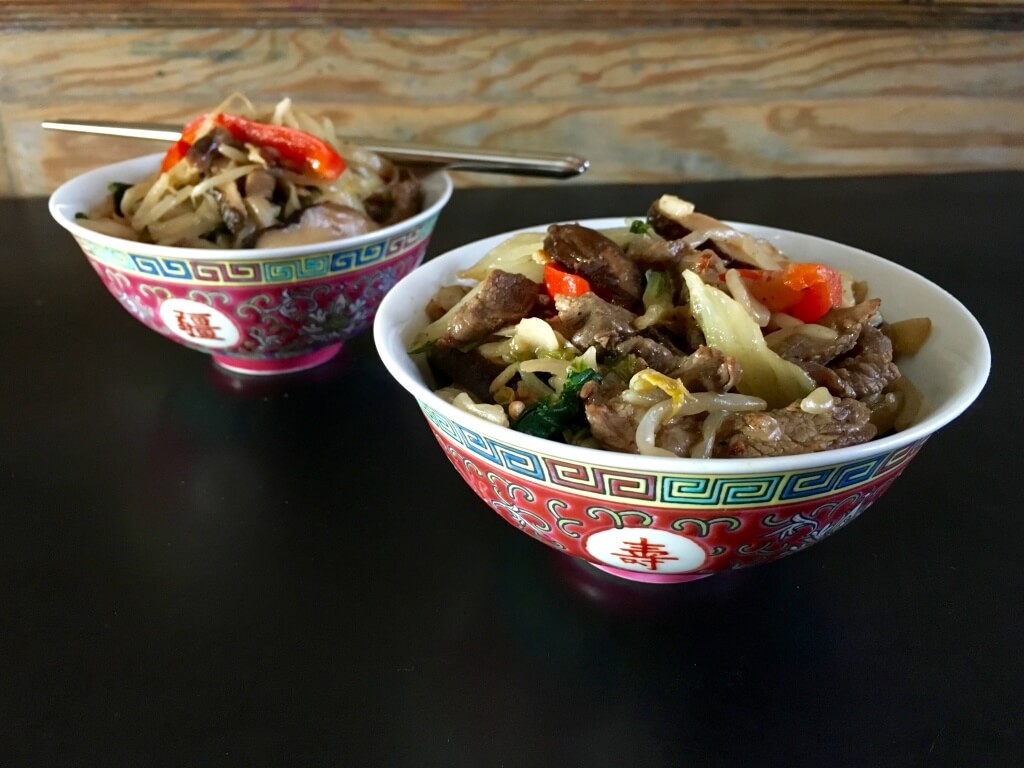 Hello, my name is Ron, and I am @fabsoopark‘s husband. Being married to a food blogger, I often get asked “who does the cooking at home?” You may think we eat out every meal, but we don’t and when we stay in – spoiler alert, it’s me who cooks. The follow up question tends to be “what do you cook?”…hinting towards, what do I make for someone who eats out a lot!
Hello, my name is Ron, and I am @fabsoopark‘s husband. Being married to a food blogger, I often get asked “who does the cooking at home?” You may think we eat out every meal, but we don’t and when we stay in – spoiler alert, it’s me who cooks. The follow up question tends to be “what do you cook?”…hinting towards, what do I make for someone who eats out a lot!
My go-to dish that I know Soo will always eat is my beef chow fun. Soo is Korean, and I am Chinese-American with parents born in Guangdong (Canton). What does that mean? My family speaks Cantonese, which is primarily spoken in and around Guangdong as well as in Hong Kong. The rest, and majority of China speaks Mandarin. Just as the languages are different, so are the cuisines.
Cantonese cuisine tends to be more simple and mild in flavor so it doesn’t overpower the freshness of the ingredients. Some popular dishes include whole steamed fish, roast pig (char-siu), dim sum, and beef chow fun. Conversely, Mandarin is more of an elaborate cuisine in both style and flavor as it has ties to the imperial days – intricately carved vegetables, mu-shu pork, Peking duck, Mongolian hot pot. and Mongolian beef. And there is your cultural lesson for the day!
And the capstone question is “how did I learn to cook?” Short version, my family owned a restaurant. Long version, my grandfather opened a few restaurants in Toledo, Ohio, including the Surf Supper Club in 1958 – a Chinese-American restaurant. My dad took over the business in 1982 until he retired in 2003. Ironically, I never worked there, nor was it where I learned to cook. I have always been around good cooks, and when I got older and was on my own, I realized I was too cheap to eat out all the time…so I started cooking. As I grew weary of spaghetti and meat sauce and craved some “home cooking”, I started asking my dad as well as my brother-in-law (also a very good cook) for some tips. Chinese cooking generally does not have recipes, so when Soo asked me to write this up for the blog, it was quite the task.
So back to the beef chow fun…it is a staple in Cantonese cuisine and growing up, it was a real treat for our family – a welcome change to beef & broccoli stir-fry or steamed fish with black bean garlic sauce. Traditional beef chow fun consists of beef, wide noodles, bean spouts, onions and soy sauce and is cooked quickly and at high temperatures. My version, which Soo has come to love, includes all the traditional ingredients, plus more vegetables, shiitake mushrooms and sauces to add more color and flavor. We hope you like it…
- For the Beef:
- 1.5 lbs beef flank steak
- 1 Tbsp. ginger (minced)
- 1 red pepper (medium)
- 1 yellow onion (medium)
- 10 shitake mushrooms (dried or fresh)
- 2 Tbsp. black bean garlic sauce
- 1.5 Tbsp. chili garlic sauce (optional)
- 2 Tbsp. sesame oil
- 1 Tbsp. corn starch or flour
- 3 Tbsp. water
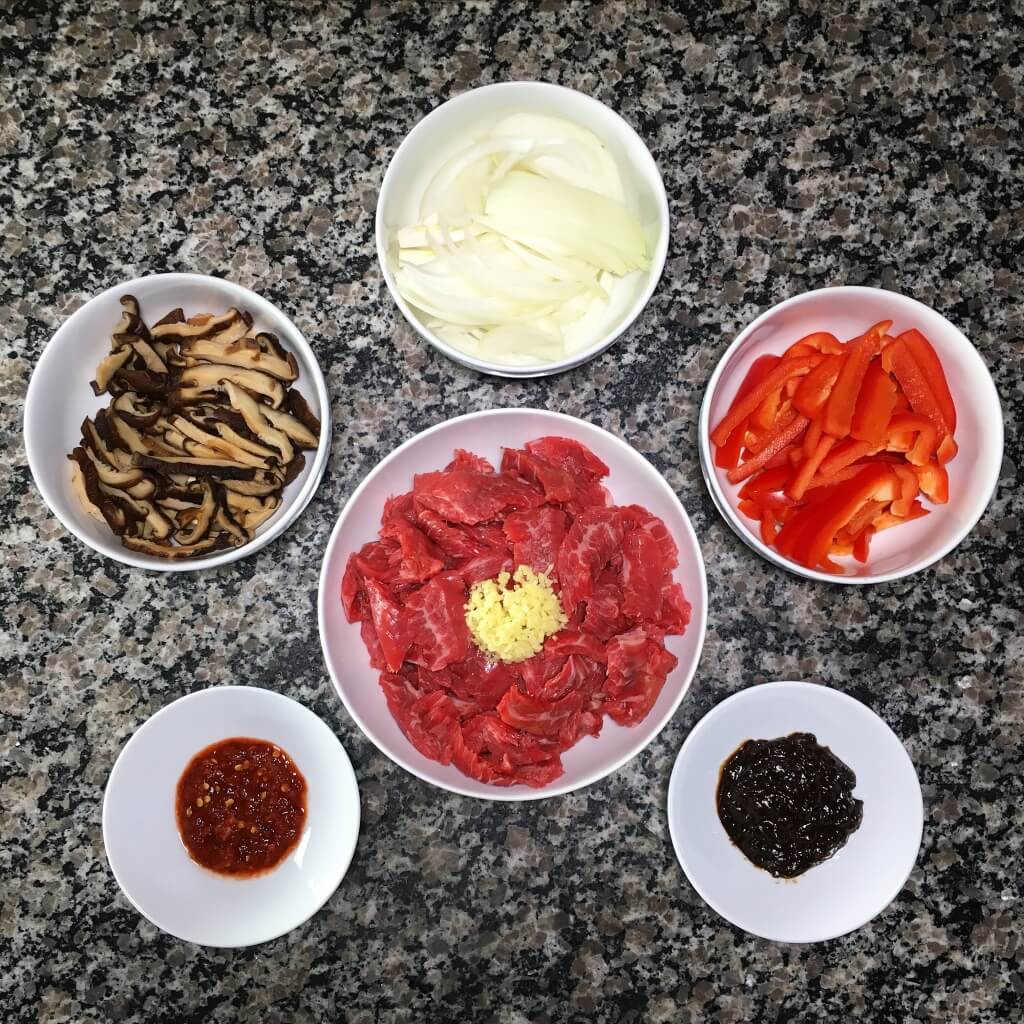
- For the Vegetables & Noodles:
- 2 lbs. bok choy (one bunch)
- 1 lb. bean sprouts (preferably fresh)
- 2 lbs. chow fun noodles
- 3 Tbsp. oyster sauce
- 3 Tbsp. fish sauce
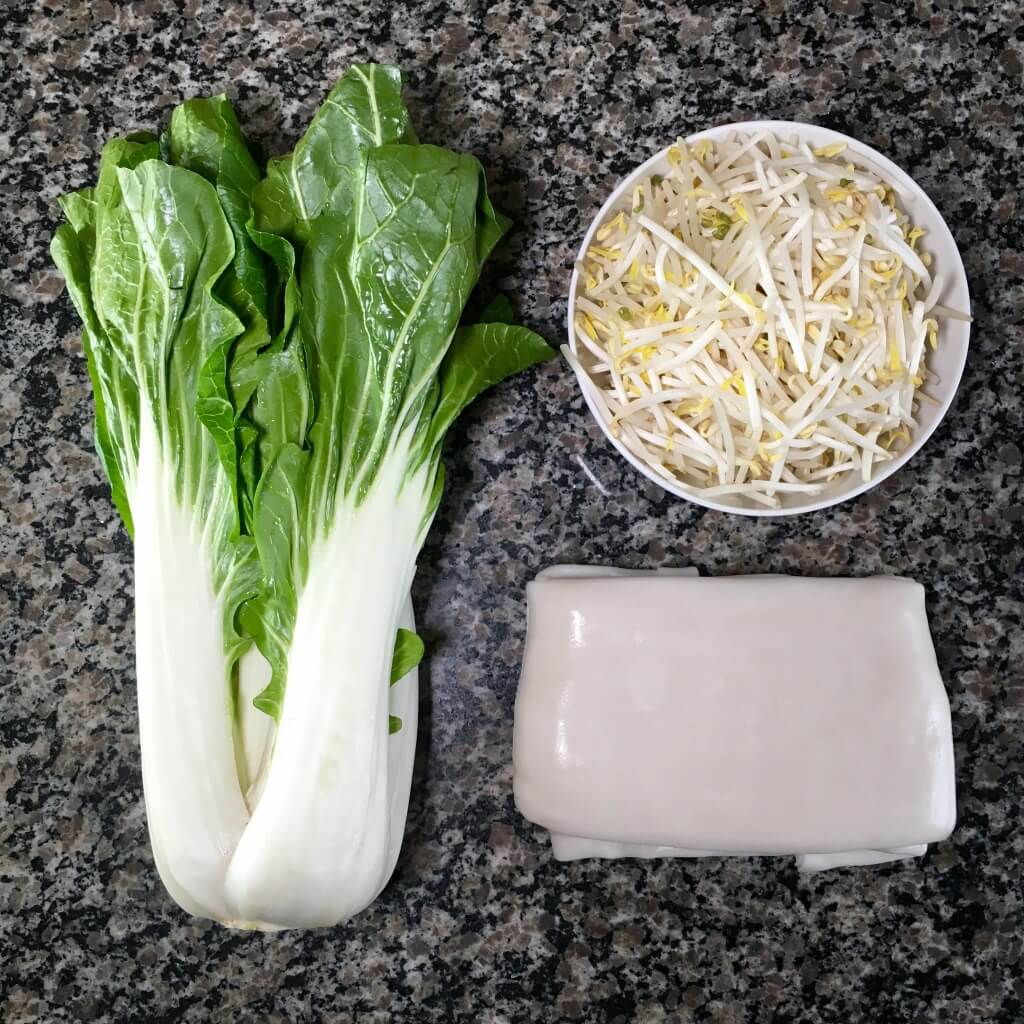
- As with a most stir-fry, the prep time usually takes longer than the actual cooking. These times are estimates based on your knife skills (mine are good, not great). The key to delicious stir-fry is actually quite simple: cook your meats separate from your vegetables, which allows you to cook each to the right temperature without overcooking either or both.
- Throughout the prep and instructions, I’ve outlined two separate sections for “Beef” and for “Vegetables & Noodles”.
- Cut the flank steak (with the grain) into strips about 2 inches wide
- Slice the strips of flank steak into pieces about ¼ inch thick; slice perpendicular to the grain and at an angle. FAB TIP: Cutting the beef against the grain allows more sauce and flavor to get absorbed into the meat, and it will be easier to chew.
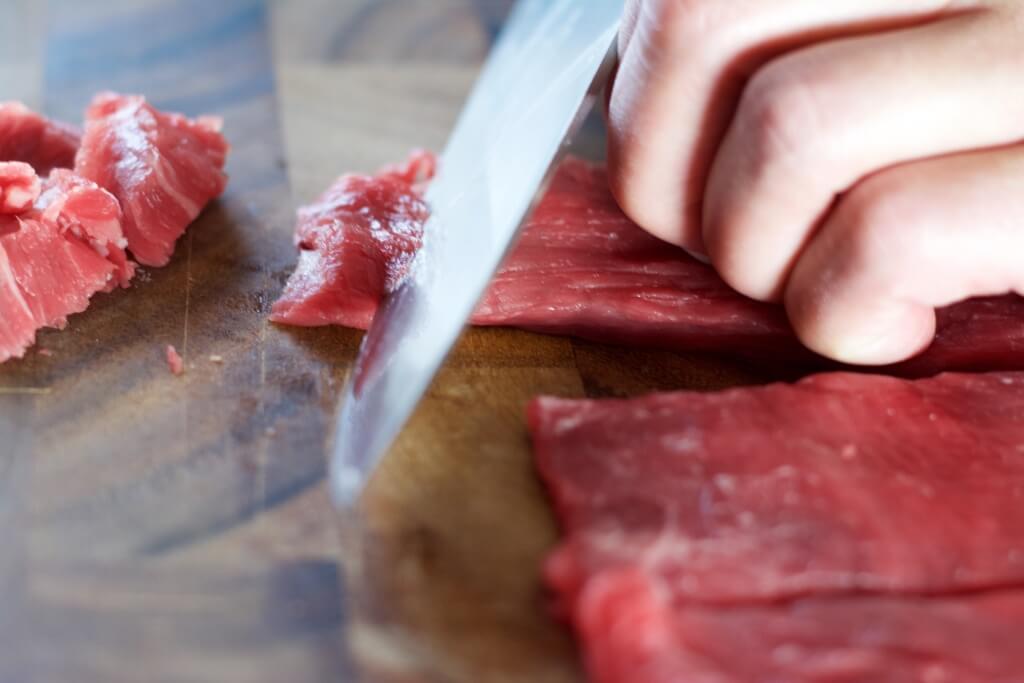
- Mince fresh ginger
- Slice the red pepper, yellow onion and shitake mushrooms into long strips. FAB TIP: Dried shitake mushrooms give a more robust flavor than fresh ones, but you will need to soak them for an hour or two in cool water before you can slice them (not included in the prep time above).
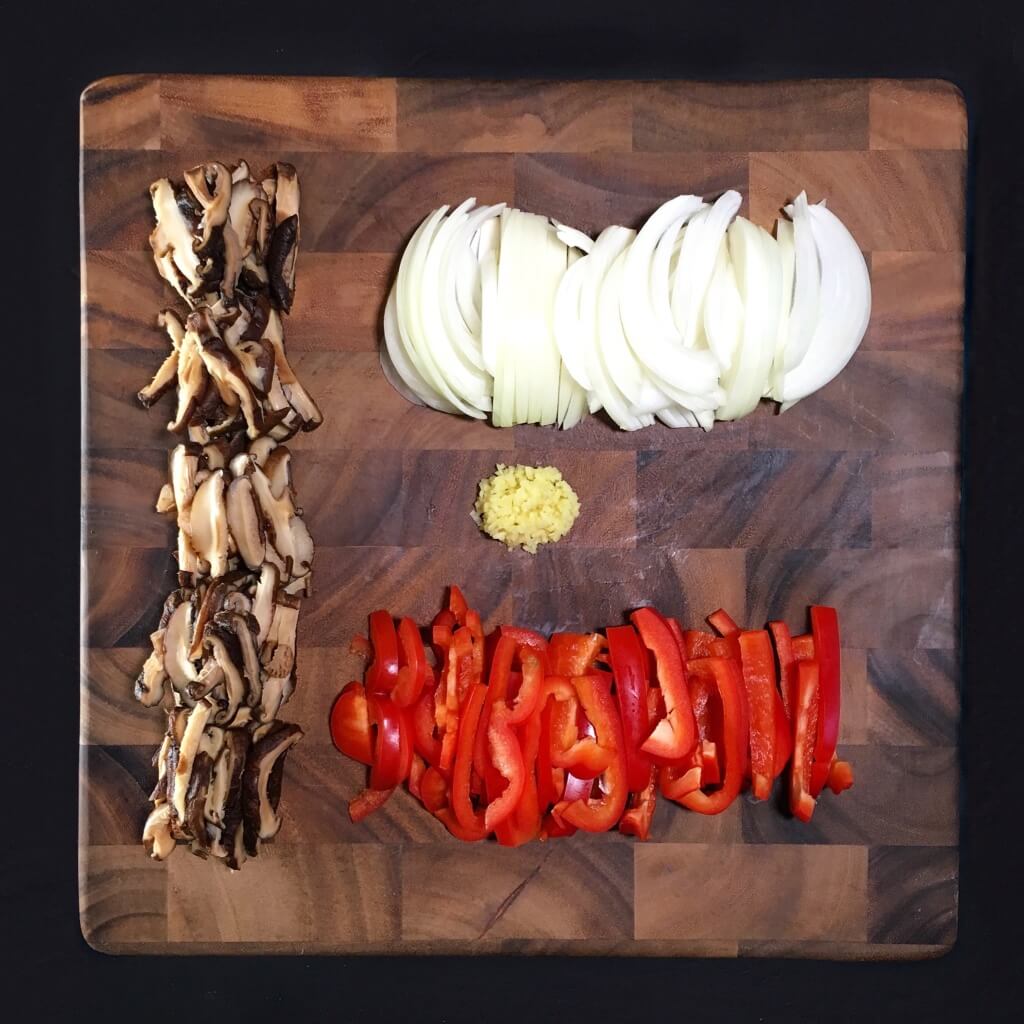
- In a large bowl, mix the flank steak, minced ginger, onions, black bean garlic & chili garlic sauces, together and refrigerate until ready to stir-fry. (chili garlic sauce is optional; we like our beef a little spicy)
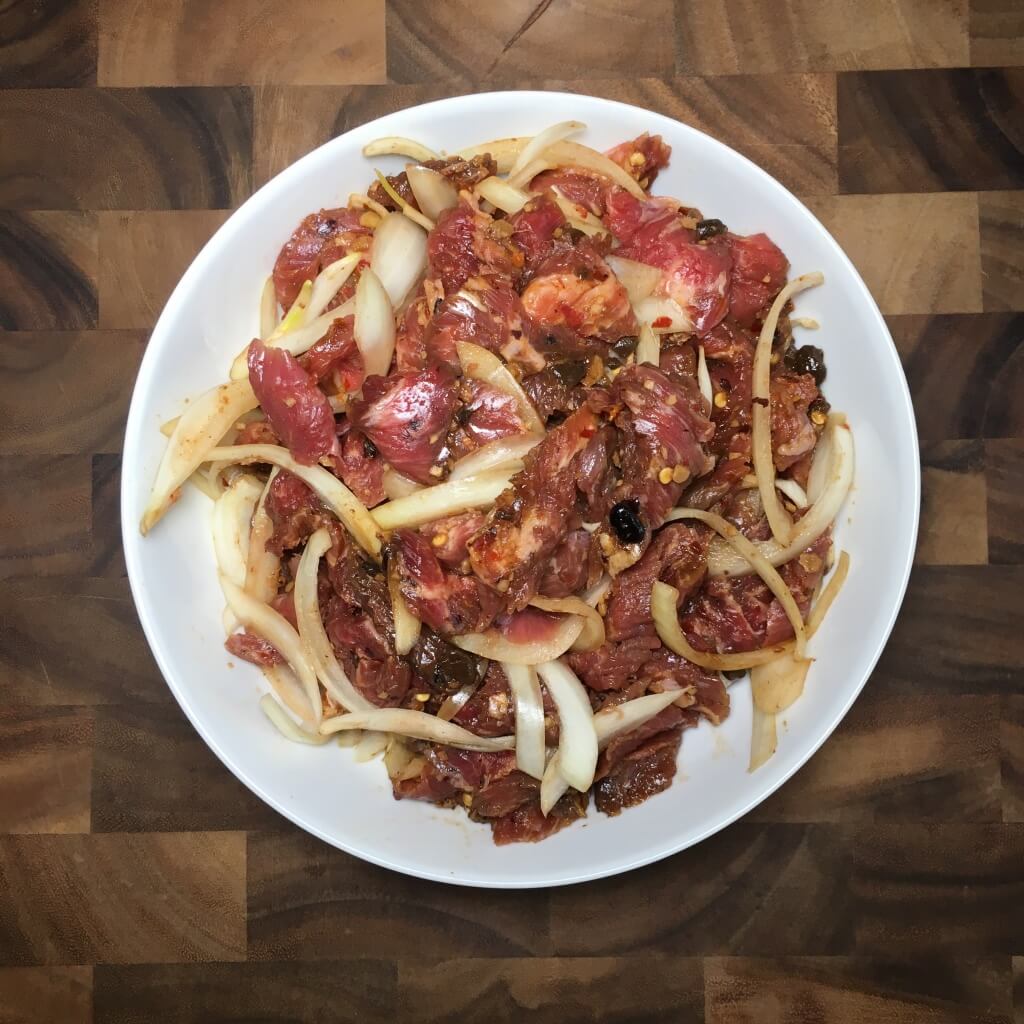
- Clean the bok choy and bean sprouts well, especially the bok choy – similar to celery, dirt often gets trapped by the base of the bunch.
- Slice the bok choy at an angle to create long pieces
- If not already pre-cut, slice the Chow Fun Noodles into strips (we prefer slightly wider slices, ~1 inch) and peel some of the layers apart.
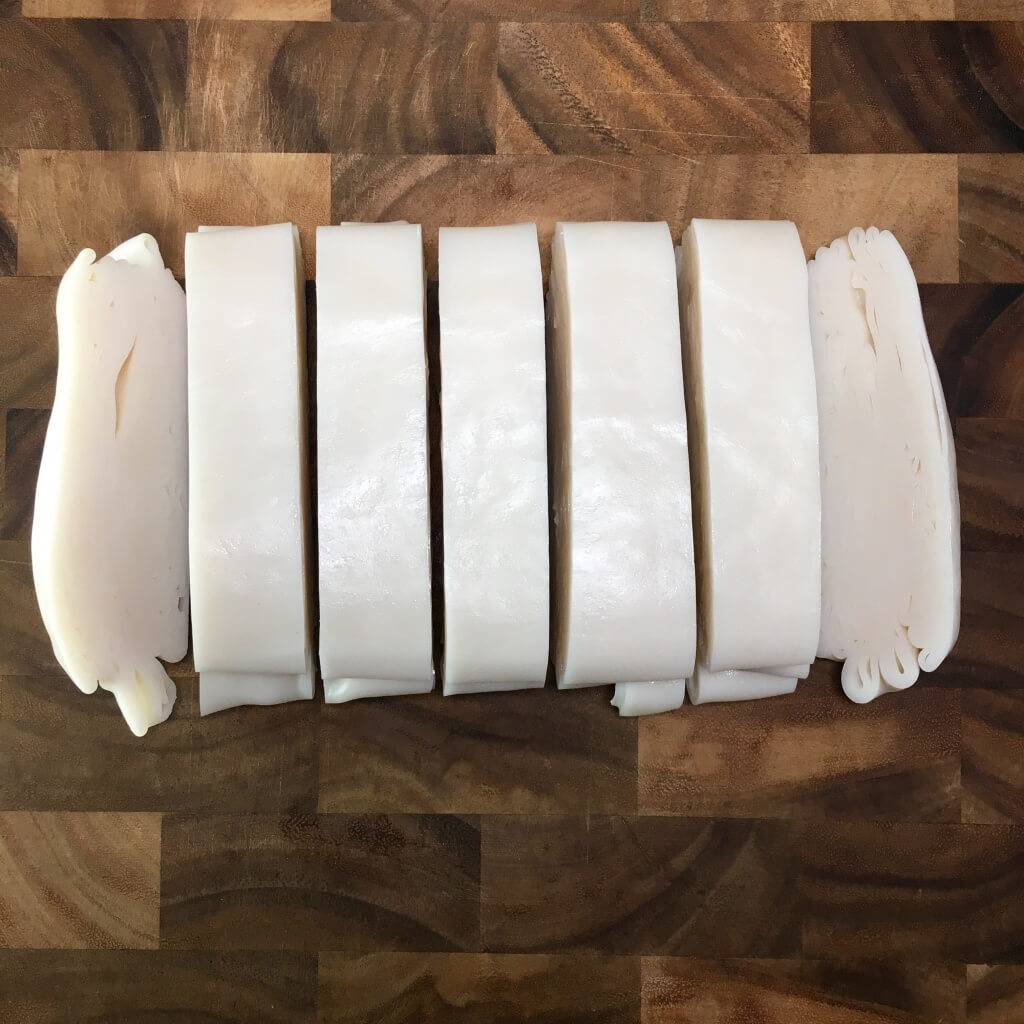
- Heat up the sesame oil in your Wok (or large frying pay) at medium to high (1-2 minutes).
- While you wait for the wok to heat up, mix the corn starch and water in a small bowl and set aside
- When the oil starts smoking, you are ready to go… get ready for the sizzle and smoke (turn on your exhaust fan).
- Add the flank steak mixture along with red peppers and shitake mushrooms to the hot wok.
- Stir fry until the beef is mostly brown but a little pink (about 4-5 minutes). You want your meat to be slightly undercooked.
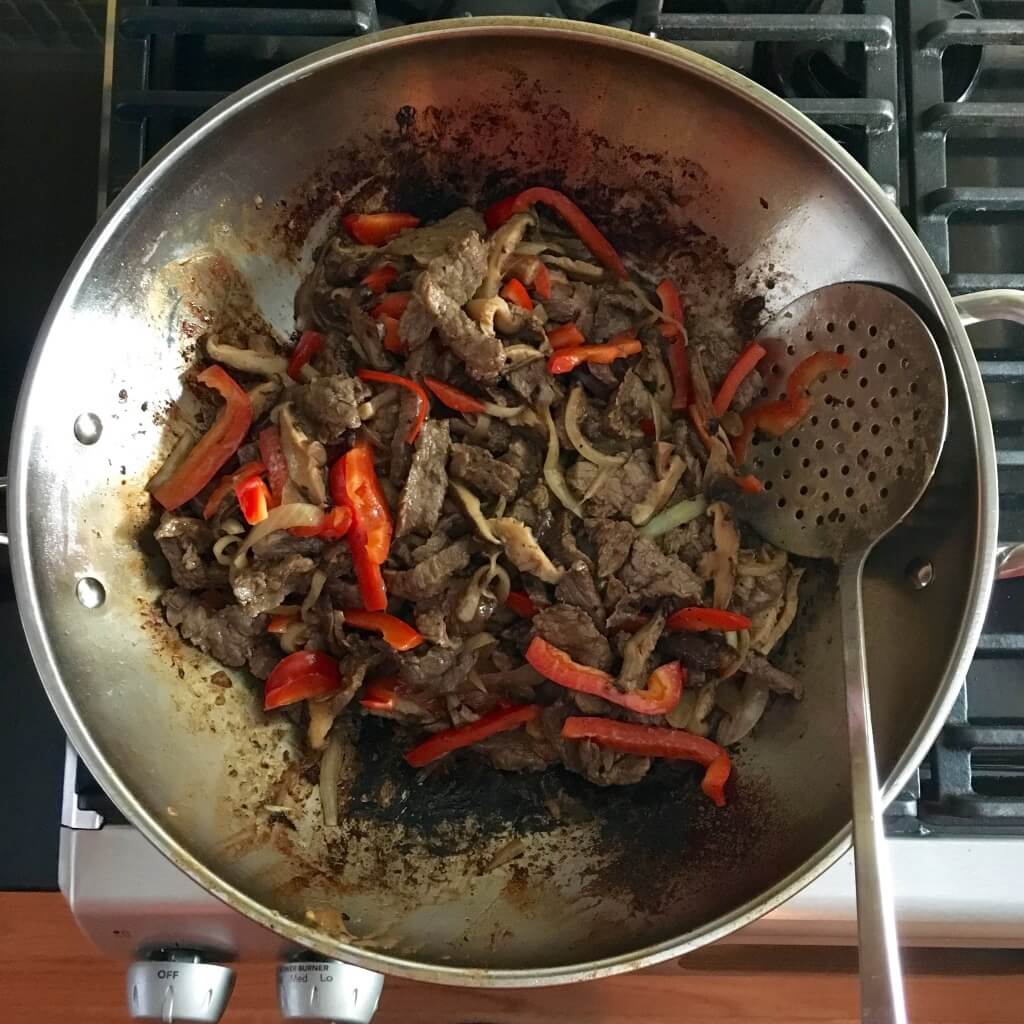
- Add in the corn starch and water mixture (this helps thicken the juices) and continue to stir fry for about a minute.
- Empty the wok into a bowl and set aside (the beef will continue to cook while in the bowl, which is why you want to undercook the beef a touch)
- With the wok still hot and flavored with beef, dump in the bok choy, noodles and bean sprouts, and cover the wok. Turn heat to medium. FAB TIP: Traditional methods would have you add more hot oil and quickly stir fry the bean sprouts and noodles. Adding vegetables, like bok choy will release water and eliminate the need for more oil and make the noodles nice and tender.
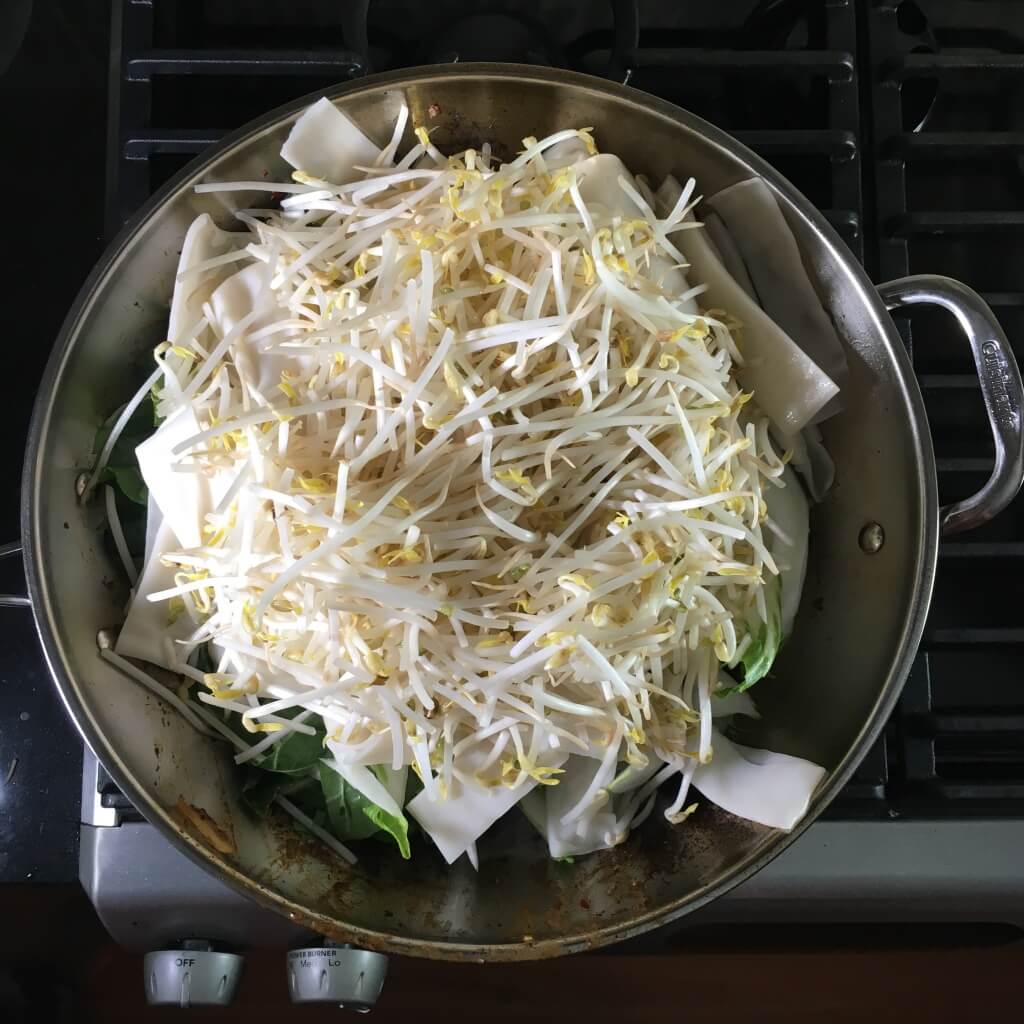
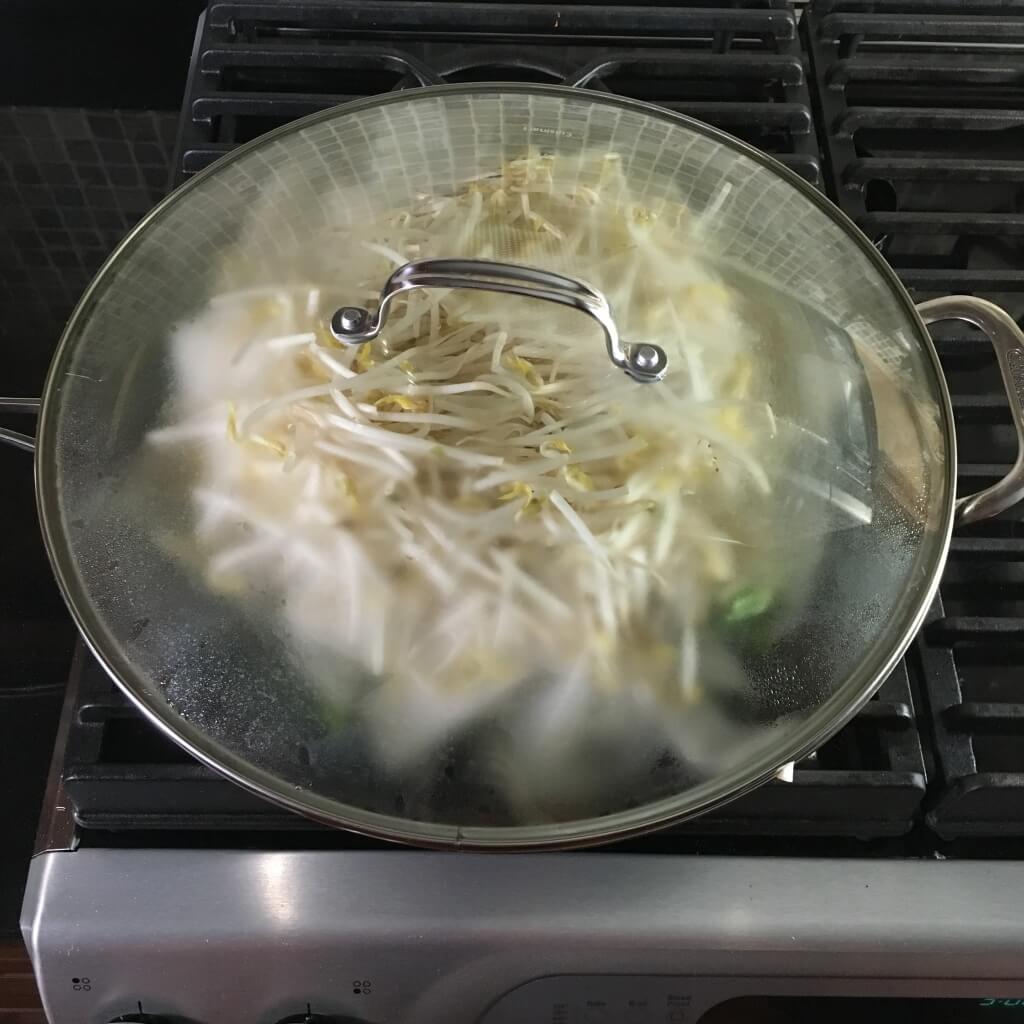
- Add the Oyster and Fish Sauces.
- Cook the vegetables and noodles for 6-7 minutes, covered, but stir as needed.
- When the vegetables are just about cooked to your liking, add the beef mixture into the wok, turn up the heat and stir for a 3-4 more minutes, until everything is thoroughly mixed together.
- Remove from heat and serve.
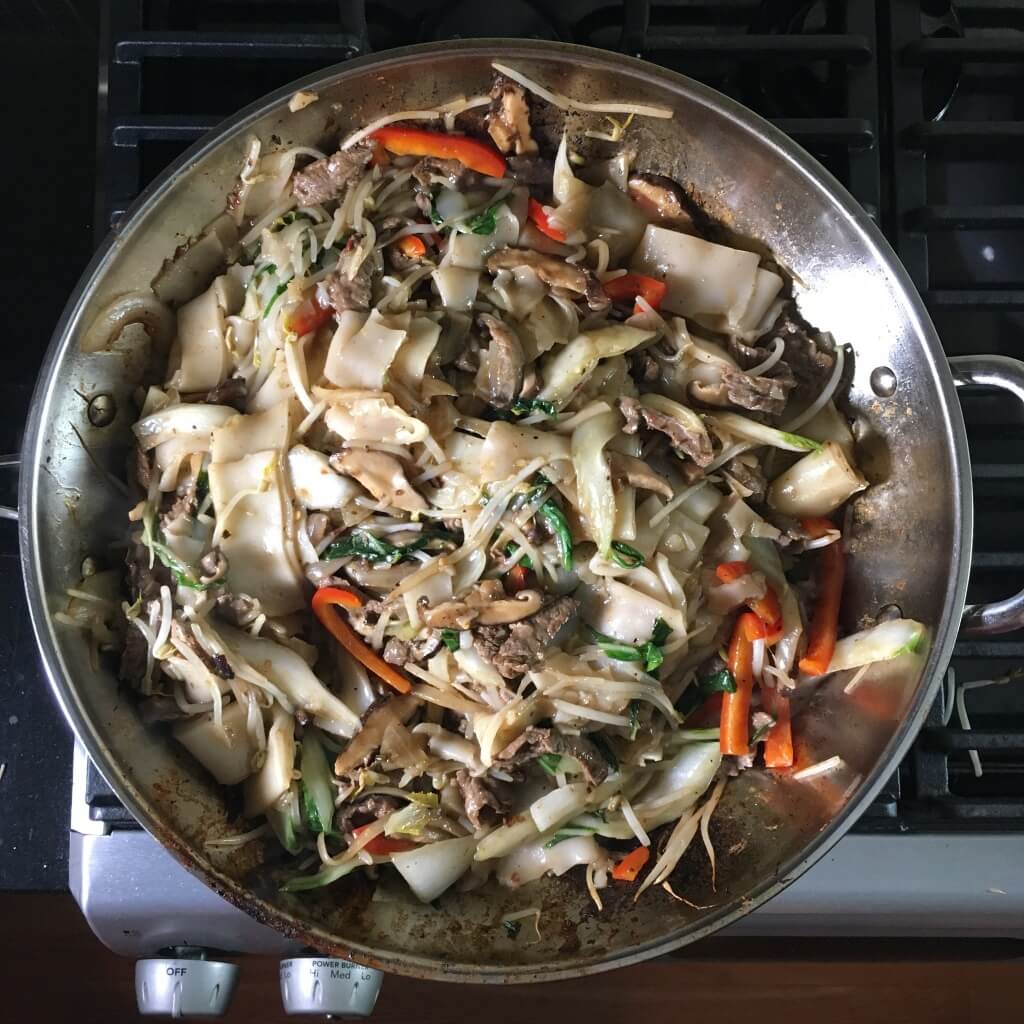
As I mentioned, the key to stir fry is to cook the meat and vegetables separately. Check out the video to see how to finish off a good stir fry…
Time to eat!
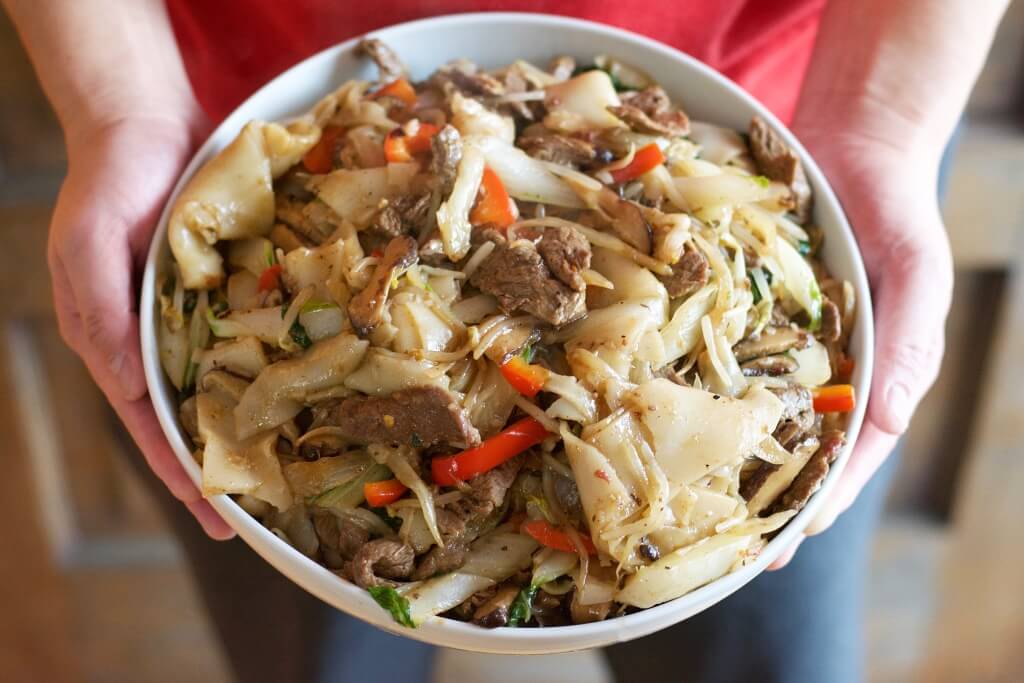
Fab Recipe: Beef Chow Fun // Photo: @fabsoopark
I hope you enjoyed my first official blog post and recipe. As with any recipe, you can make it your own by substituting ingredients you love to eat. For my beef chow fun, I often make it with Chinese broccoli instead of bok choy, sometimes I add shrimp or pork, and sometimes I use different sauces to flavor the proteins. Making a few minor changes here and there can spice up your meal so you never get sick of eating the same thing twice.
FAB TIP: If you prefer a more traditional chow fun with more fried and crispy noodles, use less vegetables, add more oil, and use a non-stick frying pan or you’ll be cleaning the wok for days.
Thanks for tuning in and cheers from the self-proclaimed best #InstagramHusband.
Happy Eating,
Ron

I’ve never tried chow noodles-I thought they were pappardelle noodles. Great job on the first blog post and I can’t wait to try your recipe on my family.